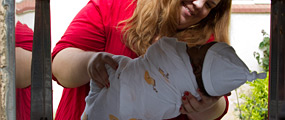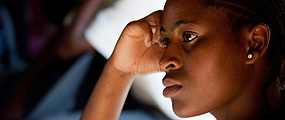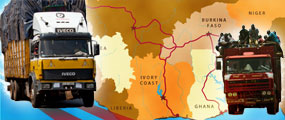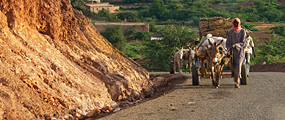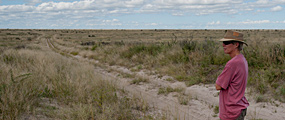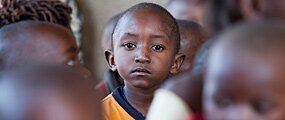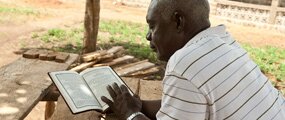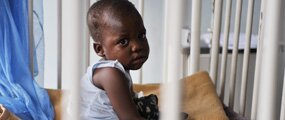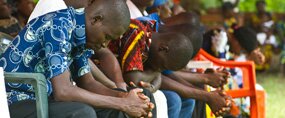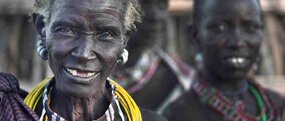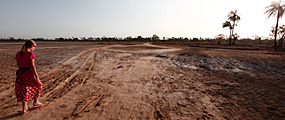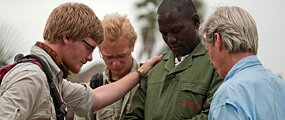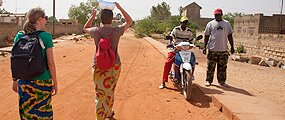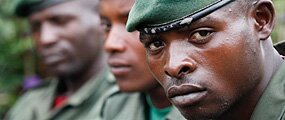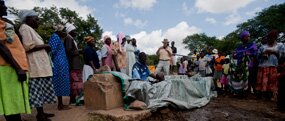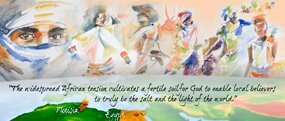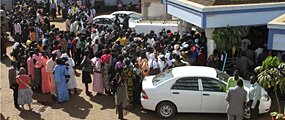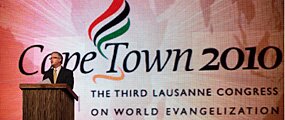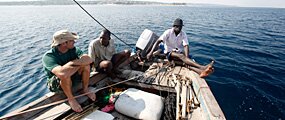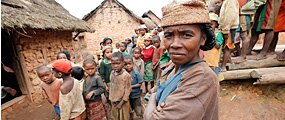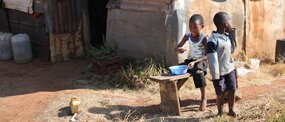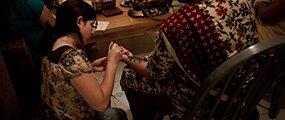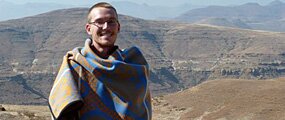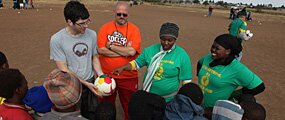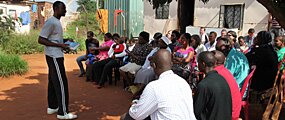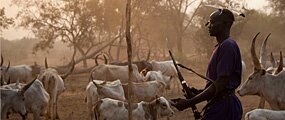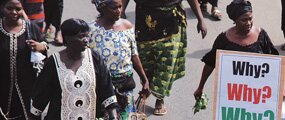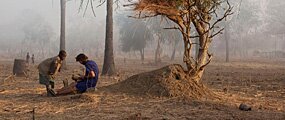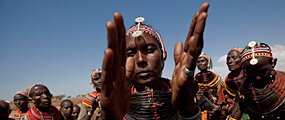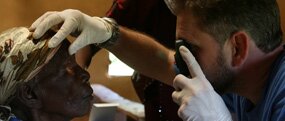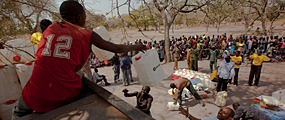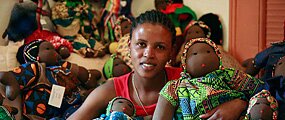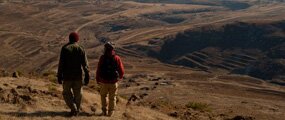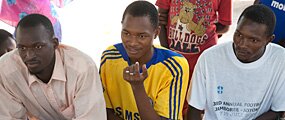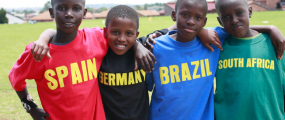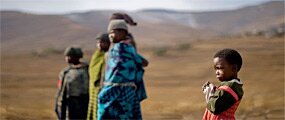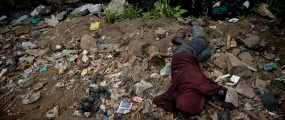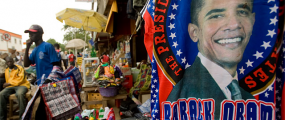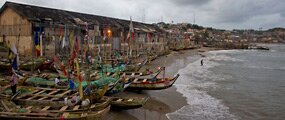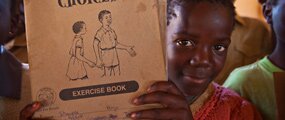Fighting Neverland
Posted on April 10, 2010
AKOT, Sudan – They hear the distant thump of goatskin drums. It’s midnight and the dancing begins. From inside their tent, they see stretched silhouettes of men and women leaping around the fire. As the night creeps toward morning, the beats of the drum grow louder, and the dancing becomes frantic and more sensual.
 At dawn, IMB missionaries Jennifer M. and Whitney P. step from their thin nylon covering into the world of a Sudanese cattle camp. The women follow a cattle keeper, weaving through a maze of thick smoke and twisted horns, pulling out their cameras to take pictures of the cows decorated with bells and tassels.
At dawn, IMB missionaries Jennifer M. and Whitney P. step from their thin nylon covering into the world of a Sudanese cattle camp. The women follow a cattle keeper, weaving through a maze of thick smoke and twisted horns, pulling out their cameras to take pictures of the cows decorated with bells and tassels.
Among the Dinka, cattle are the cornerstone of society. The strongest young men are sent to cattle camps to care for their family’s greatest wealth, the cows. They carry spears and AK-47s to protect their livestock from thieves and predators, and also to participate in the frequent, violent skirmishes that rock Southern Sudan.
Before dawn, many of the young men parade their cattle around the camp, zealously singing songs praising the beauty, strength and size of their best bulls. Small boys crawl beneath the cattle, collecting dung in large piles to be burnt. Teenage girls gather milk in brightly-colored, plastic buckets.
These young men and women live in their own African version of Peter Pan’s “Neverland.” Miles from parents and community elders, the youth are free from cultural rules and authority.
“What happens in cattle camp, stays in cattle camp,” says Jennifer.
In cattle camps, youth are allowed unhindered and risky sexual activity. Women are often passed among men, and sex has become all but obligatory.
One Dinka man asks, “If we see a beautiful woman and we aren’t able to take a wife, how can we resist sleeping with her?”
It’s these sorts of behaviors that have led to a rapid spread of HIV/AIDS in southern Sudanese communities.
In the past, decades of civil war kept Sudan isolated from the outside and relatively immune to the AIDS pandemic. However, since the signing of the Comprehensive Peace Agreement in 2005, the virus has rapidly infiltrated the country.
It’s this virus that brings Jennifer and Whitney to cattle camp. They come with a very important story about ma adarwal, the Dinka name for HIV/AIDS. It means “the disease that defeats medicine.”
Late in the afternoon, a group of more than 100 cattle keepers gather on the dung-covered ground, their chins resting gently on spear handles or the butts of AK-47s.
In the distance, a young man walks proudly ahead of his cattle, smiling as he points his AK-47 to the sky and fires a single round. His cows saunter behind him, unfazed by the gunshot. The cows’ twisting horns pull their heads toward the dusty earth as the tall, lanky man fires another celebratory shot into the air, laughing with joy at the cattle he recovered from thieves.
 Without pause, Jennifer begins her story. “There was a cattle camp full of alert cattle keepers …”
Without pause, Jennifer begins her story. “There was a cattle camp full of alert cattle keepers …”
The hardened warriors lean closer, deep scars stretching across their foreheads.
“And there was a second camp where the cattle keepers weren’t watchful …”
This is a parable of a healthy human immune system and one destroyed by HIV/AIDS, the worst of 15 deadly illnesses taking the lives of the Dinka.
“The cattle are left to fend for themselves and quickly die without the cattle keepers to protect them.”
The parable is meant to explain to the men how HIV/AIDS destroys the immune system by killing the body’s “cattle keepers,” commonly known as white blood cells, leaving the body susceptible to other diseases.
This message, designed specifically for the Dinka, explains HIV/AIDS in a way easy for the cattle keepers to understand.
The cattle keepers are not the only ones learning about HIV/AIDS. The program focuses on the most at-risk segments of Dinka society, which include military camps, primary schools and cattle camps. In addition, the curriculum has been taught in women’s groups, World AIDS Day celebrations and churches.
The program’s 13 stories include not only HIV/AIDS parables but also Dinka folktales and stories from the Bible.
“If we want to solve the problem of HIV/AIDS, the answer is the Gospel,” Jennifer says. “We want to emphasize the hope of the Gospel. If you’re going to address HIV/AIDS killing the body, you must also address what is killing the soul.”
That is why the traditional parables focusing on HIV/AIDS prevention and awareness are presented alongside Bible stories. In a largely animistic culture, people are often uninterested in biological explanations for diseases. Medical treatments are often forfeited for rituals prescribed by a traditional healer. When Jennifer and Whitney talk about HIV/AIDS, they focus on the importance of obedience to God, who has power over all spirits and diseases.
At the end of the presentation, one of the young men stands. He wears a short blue dress, torn by years of fighting.
“No kawajas [foreigners] have ever come and stayed in our cattle camp,” he says. “We are uneducated people, and we have never heard anything of this disease before. Thank you for bringing this message to us.”
Jennifer, Whitney and other IMB missionaries are funded by Southern Baptists’ gifts to the Cooperative Program and the Lottie Moon Christmas Offering for International Missions. To learn more, visit imb.org/giving.
Joann Bradberry is a photographer for IMB’s Global Communication Team. She’s hooked on caffeine and never sleeps the night before a trip. Her passion is sharing the love of Christ with Africa’s street kids.

